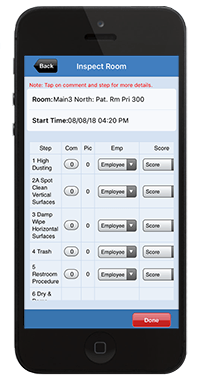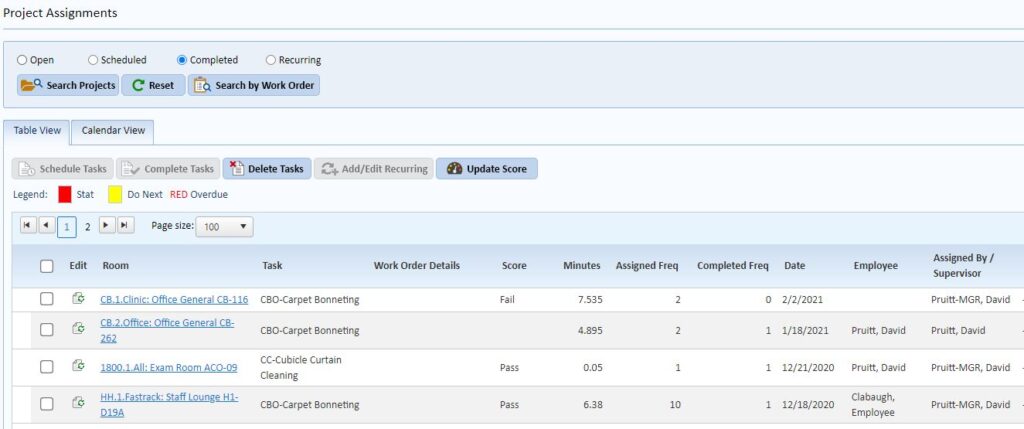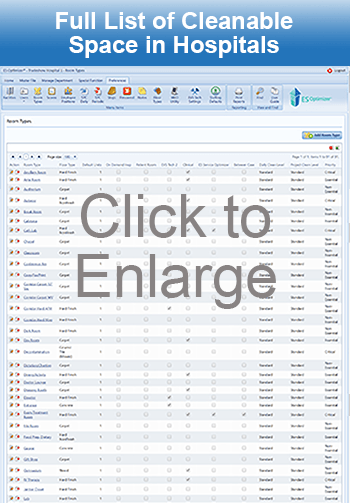insights
Why an Admission, Discharge & Transfer System CANNOT Replace Environmental Services Software
The Admission, Discharge, and Transfer (ADT) software is the backbone IT system in the hospital. It manages the most important activity: admitting and discharging patients and getting paid for the services. A hospital does much more than selling bed space, but at its core, admitting new patients is what keeps the hospital financially viable.
Making sure the empty, discharged beds turnover quickly to clean, infection-free rooms available for admission is also very important. This is a key function of an Environmental Services Department, so of course, the EVS department needs to be intimately involved with the ADT system.
However, it is a costly mistake to think that an ADT software has all the tools necessary to manage Environmental Services. Here are the key areas where only an Environmental Services Software can optimize the hospital’s second largest workforce.
Overall Staffing Numbers
Discharges, Transfers, and Isolation cleans, which can be tracked in the ADT system, are only part of the the EVS department’s cleaning responsibilities and budget.
Smart Facility Software has performed thousands of staffing analyses for hospital EVS departments. We continually find that patient room discharge cleans account for only 10 — 20% of the total FTE (full-time employee) budget. (Departments where this is less than 10% tend to be overstaffed — and departments where this is more than 20% tend to be understaffed.)
The other 80–90% of the budgeted FTEs that cannot be managed in the ADT system are:
• Occupied patient room cleans
• Daily cleans, policing, and project work for every room, corridor, elevator, entrance, and stairwell in the hospital.
• Lock-ins for between-case cleanings and multiple shift coverage.
• Trash removal, meeting set-ups, supply stocking, linen distribution, etc.
• Breaks and non-productive time of FTEs (e.g. vacation and sick time).
• Management FTEs
So, the ADT system cannot provide the number of FTEs needed to clean the full hospital.
HAIs do not limit themselves to only patient rooms during discharges. Our environmental services software, ES Optimizer, has 91 room types, only 4 of which are patient rooms.
Daily Work Assignments
In addition to missing cleanable space, an ADT system does not house project work, tasks and frequencies required to build daily assignments.
ADT systems track all the patient beds in a hospital and assign them to zones which are associated with daily cleaning assignments for ES Technicians. An ADT system usually does not, however, list any of the other rooms, corridors, entrances, stairwells, and elevators that need to be cleaned daily, policed, and between-case cleaned. It also doesn’t address the frequency of cleaning (e.g. 5 or 7 days/week). Finally, an ADT software does not manage the project work (e.g. floor finishing, buffing, shampooing, wall washing, etc.) for all these rooms.
All of these cleanable spaces along with frequencies need to be in the software to build equitable daily work assignments for ES Technicians that make sense from a geographic standpoint. ES needs to have the right number of people in the right place at the right time, not only to do discharges, but also perform the other 80%-90% of the work that needs to be done 24/7/365.
ADT systems cannot provide these work assignments since they do not house the data elements to do so.
Quality Assurance

Some ADT systems provide a measure of Quality Assurance (QA) capability. But once again, typically only for patient rooms. ES
Optimizer has a QA system for all cleanable space in the hospital, including discharge cleans. The inspections that are being run for the EVS department needs to be incorporated into the discharge and patient room daily cleans. You only want to run one QA system for ES functions so that the data is comparable and coherent.
Apps running on smart devices synchronizing with a web-based database is how an ES management tool should handle QA.
Census-Based Scheduling
Flexing the daily work assignments for the day’s census.
Census-Based Scheduling is not as big of a component for EVS departments as it used to be. Rarely do you find hospitals these days with a 10% or more level of clean and empty patient rooms ready to be occupied every morning. However, if your hospital is running less than 90% census, then the ES department needs a system to flex daily work assignment coverage up or down.
The only true variable in a Hospital EVS department workload is census, discharges, and transfers. The rest of the cleaning is typically fixed; it was cleaned, or it was not cleaned. If census does fluctuate, then the EVS department needs to be able to flex the variable cleaning (daily, discharge, transfer, and isolation cleans) with fixed cleaning such as nurse’s stations, waiting areas, restrooms, etc. An ADT system does not incorporate the rooms for fixed cleaning and, therefore, cannot be used as a census-based scheduling tool.
Days-On/Days-Off Scheduling
ADTs lack full EVS scheduling capabilities.
Without EVS software, scheduling personnel with work assignments typically tends to be done in Excel spreadsheets that are saved as a new file every couple of weeks. This leaves behind a trail of confusing historic files.
A web-based database application built specifically for EVS departments organizes all the employees and the work assignments. The uncovered assignments can be easily be searched and paired with open employees. Open employees that match the assignment can be found through a filtered search as well. Assignments can be applied to calendar dates and easily changed by supervisors, who have the ability to print out sign-in sheets and rosters. This is much more efficient and error-free.
ADTs have none of these capabilities other than showing what employee was assigned to each zone and which beds they cleaned.
Scheduling and Tracking Project Work

A typical hospital has thousands of projects aside from daily cleaning that need to be scheduled and tracked. Since an ADT system tracks patient rooms, perhaps the floor finishing, buffing, etc. could be run through an ADT. However, ADT systems can’t schedule the main lobby waiting area to be shampooed. EVS software includes data for these spaces and the ability to add to work assignments, schedule staff, and record its completion. See ES Optimizer’s Project Assignment screen to the right.
Employee Training and Records
An ADT system can’t keep track of all the in-services needed for a successful ES department, or record employee commendations and consultations. A web-based database designed for and used by ES Departments will. With ES Optimizer’s training management module, reports on training history can be run instantly for the Joint Commission.
EVS Software is needed in addition to an ADT System
While Admissions, Discharges and Transfers systems are an essential tool in hospitals, they are not built to handle all functions of Environmental Services. Bed tracking information is key to managing environmental services and EVS managers should be very involved with the ADT system. But, EVS managers also need a software tool, like ES Optimizer, built specifically for their departments in order to reach their full productivity and efficiency at keeping the entire hospital clean and infection free.
Author: Shawn Wright
Shawn Wright is one of the owners of Smart Facility Software. He has over 25 years of experience in ES consulting and implementing software in environmental services departments nationwide.



